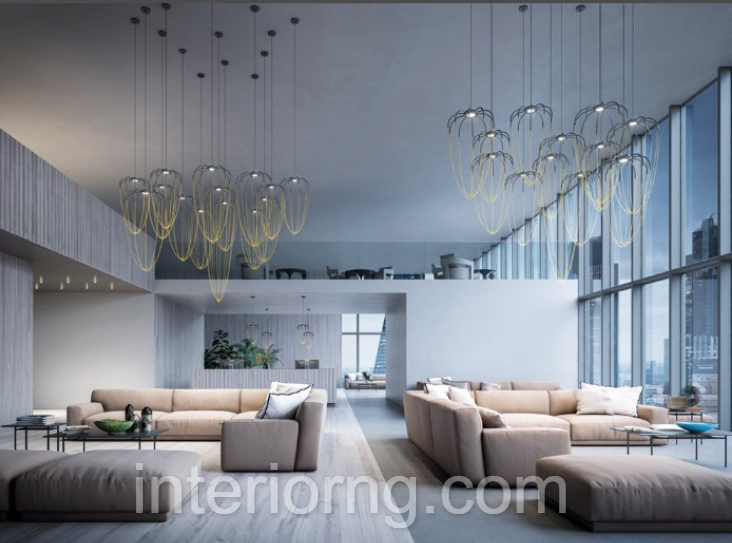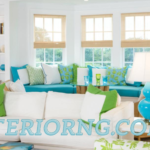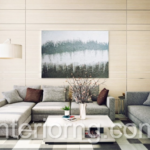Lighting in Interior Design is a very critical aspect and should be taken quite seriously. Every space in a house requires a particular type of light that ought to be Functional and at the same time aesthetic.
To an interior designer, lighting is having abundant light or illumination in a space. The process of providing artificial light is also known as lighting. Lighting plays a big part in the usefulness and mood of a room. There are basically two types of lighting:
SEE ALSO: 20 Amazing Tips on How to Decorate your Home: Introducing Gilts and Glamour
Natural Lighting
This is the light that comes from the sun. Natural Light (day light) should be a huge consideration when designing your room. Since there may be a need for window treatments such as blinds or drapes to control the light. At the beginning of your design project, part of the initial assessment and requirements of a space implores the designer to evaluate the amount and direction of the available day light. The available natural light affects nearly every choice you will make as your choice of wall color and finish will be affected by the natural light that comes into your spaces. Natural is very essential and important in everyday interior space.
SEE ALSO: list of Interior Design Schools for Single Mothers in Abuja: Best interior Design Schools in Abuja.
Artificial Lighting
Artificial lighting is derived from electricity. This type of lighting is essential to enable us to carry out tasks safely and as a means of creating an ambience within a room. The drive to minimize energy use has now become the most important decisions an interior designer must make. Non-domestic buildings are required to provide lighting systems that are energy efficient. Material used for finishing a room affect the efficiency of lighting. It can be direct or reflected, shaded, hooded or frosted
and it can be placed at ceiling, head, eye and floor level. Light can be broken into the categories of task lighting (defined purpose), accent lighting (emphasizing objects) and mood lighting (adding ambience).
Having stated the types of lighting. We need to know that to fully understand how important lighting is in interior design. We are going to show you why lighting matters and how it can help to transform our space.
Color Management
Lighting in a space helps to enhance most of the surfaces in a way that it can add or subtract the overall color of that space. Putting the right type of light in your room can improve the mood of the room. For example, using dark colors in a room can make the room look smaller and cramped. Which is opposite for a lighter color.
This is where good lighting comes in. If you want to transform a small room to make it look bigger, you’ll need light colored walls to make the space breathe.
The truth is that the illusion of a space is actually defined by the light that reflects off of the surface of the walls. So all you need is the right color in the too. So that the light and reflect and give you the adequate amount of light that you need.
SEE ALSO: Interior Designing Course: Earn a Diploma Online with few Online Courses
Functionality.
These days we have so many beautiful lightings and most times we even find it hard to pick one. But forgetting that functionality is one of the most critical roles of lighting in interior decor and design. Every light serves a purpose, that is the main goal.
When you make you of proper lighting, the entire functionality of a room can change. Lights such as chandelier can help illuminate the entire space while walk lights can visually add length and size to a space. You can try the luminescent or directional lighting to ensure the best illumination in your interior design project.
The functionality of a space determines the type of light to be used because different features requires different styles of lighting.
All You have to do is determine what you want, particular areas where functionality matters the most and select your type or styles of lighting
Conclusion:
You cannot start an interior design without having in mind how to bring about the best lighting for that project. As lighting is very important and critical. Lighting is also a valuable and useful element that professional interior designers use to transform any given space according to the client’s requirements.
Interior designers make use of their productivity and creativity skills to create an inviting, cozy, chic, and relaxed interior spaces that’s spells out the actual mood of the space.
Interior designers rely on new and latest technology solutions to provide the best lighting in a space.
Designers use different styles of lighting to create optic and vision illusions that’s changed the entire mood or shape of a space. This space could be a living or a working environment. Lighting in a space helps to communicate different aspects and mood of a space by breathing life to the atmosphere.
SEE ALSO: Europe Style Interior Design: Ways to Incorporate the styles into Your Home





Magnificent
I constantly spent my half an hour to read this website’s posts everyday along with a cup of coffee.